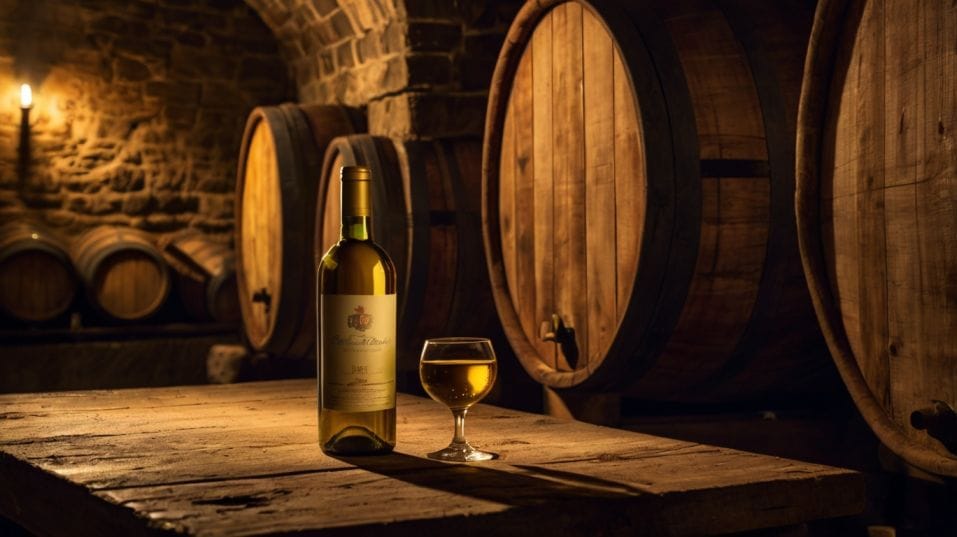Sweet Wines Aren’t Just for Beginners
Think sweet wines are simple? Think again. Discover the elegance, structure, and legacy of great sweet wines—and how to taste them with skill.

Think sweet wines are just beginner juice? Think again. Behind that sugar lies structure, depth, and centuries of tradition.
Sweet wines aren’t a step backward—they’re a doorway to understanding balance, craftsmanship, and complexity in a whole new way.
If you’re serious about learning wine, it’s time to rethink what sweetness really means. The most emotionally resonant bottles on earth aren’t always dry—and the journey to appreciating them starts here.
Sweetness Isn’t the Whole Story
The first thing to understand is that “sweet” doesn’t mean “unsophisticated.” It means there’s residual sugar in the wine—leftover from fermentation, intentionally preserved by the winemaker. But sugar alone doesn’t define the wine.
What matters is how it integrates with the other elements: acidity, alcohol, tannin, texture, and aromatics. A sweet wine without structure is flabby. A sweet wine with sharp acid, layered texture, and a long finish? That’s craftsmanship.
Consider a well-made Riesling from Germany’s Mosel region. It might carry a whisper of sweetness on the first sip, but that quickly gives way to citrus, slate, and razor-sharp acidity.
The sugar isn’t masking anything—it’s accentuating everything. That’s what balance means. When you get that right, sweetness stops being a flavor and starts becoming a feeling—like lift, roundness, or tension.

Great Sweet Wines Don’t Taste Like Dessert
One of the most persistent myths is that sweet wines only belong at the end of a meal.
While dessert pairings can be stunning (think Sauternes with Roquefort or Tokaji with an apricot tart), limiting sweet wines to that role misses the point.
In fact, some of the most exciting moments come when you pour sweet wine before dessert—or skip dessert entirely.
Sweetness as a Pairing Advantage
Off-dry wines like demi-sec Champagne or Vouvray offer a gentle sweetness that plays beautifully with savory, spicy, or tangy dishes.
A glass of off-dry Gewürztraminer next to a plate of Indian curry or spicy Sichuan noodles doesn’t clash—it calms, cools, and creates contrast.
Even richer wines like Port or Madeira, when paired with something salty or nutty, can feel less like indulgence and more like insight.
You don’t need a cheese plate or a pastry case. You just need to think about balance—how sugar plays off salt, acid off fat, fruit off spice.
What to Look for When You Taste
As you deepen your palate, start tuning into how a wine carries its sweetness. Is the sugar upfront and sticky, or does it dissolve mid-palate? Does the finish clean up with acidity, or linger thickly?
Wines that age well—like vintage Port or Trockenbeerenauslese Rieslings—often start sweet but end with freshness, minerality, or even a touch of bitterness. That contrast is part of the magic.
Texture and Finish Matter
Texture is another key. Some sweet wines are creamy and unctuous; others are crisp and feather-light.
Don’t just notice the sugar—notice how the wine feels in your mouth. How it moves. How it finishes.
These details tell you about the grapes, the climate, the winemaker’s choices. And age matters. Sweet wines often have incredible longevity.
A well-cellared Sauternes or Madeira can evolve for decades, developing complexity, spice, and depth that no dry wine can replicate in quite the same way. Tasting one isn't just drinking a wine—it's tasting time itself.
Technique Is a Telltale
Want to enjoy sweet wines more fully? Start with the basics. Serve them at the right temperature—usually cooler than reds but warmer than ice-cold whites.
Too cold and you mute the aromatics; too warm and the wine can feel sluggish. Use proper glassware—something with a narrow opening to concentrate the nose—and pour smaller amounts. These wines often carry more intensity per ounce.
But more than anything, taste actively. Don’t rush through it. Give the wine air. Let it evolve in the glass. That’s when the layers show up—honeysuckle, dried apricot, burnt sugar, spice, herbs, stone.
Sweet wines don’t always shout. Sometimes they whisper, and if you’re not paying attention, you’ll miss what makes them extraordinary.
You’re Tasting Legacy, Not Novelty
Many of the world’s greatest sweet wines aren’t recent inventions. They’re grounded in centuries of tradition—passed down through families, protected by law, revered across cultures.
Hungarian Tokaji, German Beerenauslese, French Vin Doux Naturel, Portuguese Madeira—these wines were once prized by kings and collectors, long before they became misunderstood or overlooked.
The Cultural Weight of Sweet Wine
There’s deep cultural knowledge embedded in how these wines are made. Late harvest. Botrytis. Fortification. Air-drying on straw mats. Long barrel aging.
These aren’t shortcuts—they’re deliberate choices designed to elevate flavor, extend aging potential, and express terroir in a completely different way from dry wines.
Learning about these traditions gives you context. It builds your understanding of style, geography, and history—all things that help you taste with more clarity and confidence.
Final Thoughts
Sweet wines don’t need your pity. They need your attention. They deserve a place at your table, in your cellar, and on your journey as a wine drinker.
When you drop the assumption that sugar is a flaw, you start to taste what these wines are really about: balance, heritage, complexity, and beauty.
So next time you’re choosing a bottle, reach for something you’ve been ignoring—a late-harvest Riesling, a demi-sec Chenin, a chilled glass of Madeira.
Taste it slowly. Pair it deliberately. Let it surprise you. One bottle is all it takes to shift your palate—and your perspective—for good.




